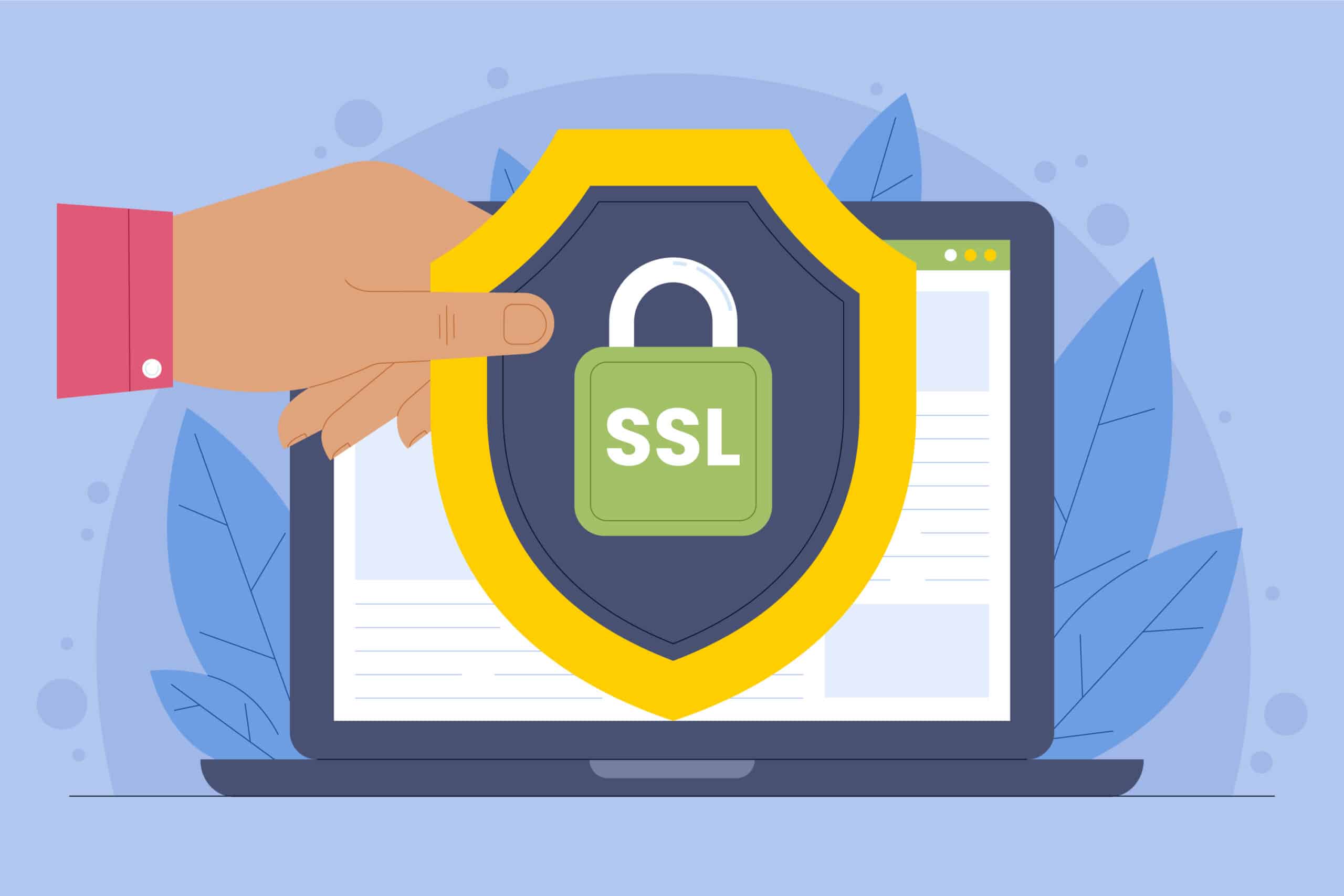The internet is an ever-evolving space, and as technology advances, so do the threats that come with it. As we approach 2023, web security has become more critical. With businesses and individuals relying heavily on the internet daily, cybercriminals are finding new ways to exploit vulnerabilities in websites and applications. This blog post explores the top web security threats you must know in 2023. From SQL injection attacks to session hijacking, we’ve covered everything you need to know to keep your online presence safe and secure.
SQL Injection
SQL injection is a web application attack that targets the SQL database and can lead to data theft or modification. It occurs when an attacker injects malicious code into a website’s input field, which the backend database server executes.
The impact of SQL injection attacks can be devastating, as attackers can gain unauthorized access to sensitive information such as usernames, passwords, and credit card details. This type of attack accounts for nearly 20% of all cyber-attacks globally.
To prevent SQL injection attacks, developers should ensure that all user inputs are properly sanitized before sending them to the database server. They should also use prepared statements while querying the database instead of concatenating strings, as it makes it harder for attackers to execute their malicious code.
Businesses and individuals must stay vigilant against this threat by keeping their software up-to-date with security patches and conducting regular vulnerability assessments. These steps can significantly reduce the risk of SQL injection attacks on their website or application.
Distributed Denial of Service (DDoS) Attacks
Distributed Denial of Service (DDoS) attacks are a type of cyber-attack that can bring down websites, servers, and networks by overwhelming them with traffic from multiple sources. The attackers use a network of devices infected with malware to send an enormous amount of requests to the target system, making it unable to handle legitimate traffic.
DDoS attacks can devastate businesses, causing financial losses due to downtime and reputational damage. These attacks have been on the rise in recent years as attackers find new ways to exploit vulnerabilities in software and hardware.
One way DDoS attacks are becoming more sophisticated is through botnets – large networks of compromised computers controlled remotely by hackers. Botnets give attackers access to vast amounts of computing power, which they can use to launch coordinated DDoS attacks.
Another trend in DDoS attacks is using internet-of-things (IoT) devices as part of botnets. IoT devices such as cameras or smart home appliances often lack basic security features and are easy targets for hackers seeking vulnerable devices to add to their botnet armies.
As technology continues evolving rapidly, so too will the methods used by cybercriminals in launching DDoS attacks. It’s crucial for businesses and individuals alike always stay vigilant against these threats by implementing preventative measures like firewalls, intrusion detection systems, or web application firewalls – sooner rather than later!
Cross-Site Scripting (XSS)
Cross-Site Scripting (XSS) is a type of web security threat that has been around for years but remains a significant concern in 2023. In an XSS attack, attackers inject malicious code into legitimate websites and trick users into running the code on their browsers.
One common method of executing XSS attacks is injecting JavaScript code into input fields such as search bars or comment sections. Once the user interacts with these fields, the malicious script can steal sensitive information such as login credentials or install malware onto their computer.
XSS attacks can have severe consequences for both individuals and organizations alike. For example, if an attacker manages to compromise an employee’s browser through XSS, they could gain access to confidential business data or even take control of company systems.
To protect against XSS attacks, website developers must implement secure coding practices and regularly test their applications for vulnerabilities using tools such as penetration testing. Additionally, users should be cautious when interacting with unfamiliar websites and avoid clicking on suspicious links or entering personal information on untrusted sites.
Cross-site scripting remains a severe threat to online security in 2023. It takes only one successful attack to cause significant damage to individuals and businesses alike.
Malware
Malware, also known as malicious software, is a threat involving using harmful programs or code to gain unauthorized access to computer systems. These harmful programs can be disguised in various forms, such as email attachments, infected websites, and even legitimate-looking software downloads.
One of the most common types of malware is viruses which often spread through email attachments and file-sharing networks. Once a virus infects your system, it can replicate itself and cause damage by deleting files or corrupting data.
Another form of malware is ransomware which has become increasingly popular in recent years. Ransomware works by encrypting your files and demanding payment in exchange for unlocking them. This attack can devastate businesses that rely on their data to operate effectively.
Other types of malware include Trojans, which trick users into downloading them by disguising themselves as harmless software updates or legitimate applications. They are designed to create backdoors into computer systems so that attackers can gain control over sensitive information like login credentials and banking details.
Preventing malware attacks requires a combination of proactive measures, such as installing anti-virus software, regularly updating operating systems, and avoiding suspicious emails or websites. Individuals and organizations alike need to stay aware of emerging threats so they can take steps to protect themselves from potential harm caused by malware attacks.
Phishing
Phishing is a type of cyber attack where scammers use fraudulent emails, texts, or websites to trick users into providing sensitive information like usernames and passwords. These attacks can devastate individuals and businesses, from identity theft to financial loss.
One common form of phishing is “spear-phishing,” which targets specific individuals or organizations using legitimate personalized messages. Cybercriminals may also use social engineering tactics to build trust with victims before requesting their confidential information.
To protect yourself from phishing attacks, it’s essential to be cautious when receiving unsolicited requests for personal information. Always verify the sender’s email address or phone number before responding, and never click on suspicious links embedded within messages.
Another essential step in preventing phishing attacks is keeping your software up-to-date with the latest security patches. This can help mitigate vulnerabilities that could be exploited by attackers seeking unauthorized access to your system.
Consider using multifactor authentication (MFA) whenever possible. MFA requires users to provide an additional form of identification beyond just a username and password, making it more difficult for hackers who obtain login credentials through phishing attacks.
Password Attacks
One of the oldest and most common web security threats is password attacks. Cybercriminals use various techniques to gain unauthorized access to user accounts by cracking or stealing passwords. Password attacks can be automated or manual, making them a constant threat.
One type of password attack is brute force, where attackers try multiple combinations of characters until they find the right one. This method requires time and computing power but can still be effective against weak passwords. Another technique is phishing, which involves tricking users into revealing their login credentials through fake emails or websites.
To protect against password attacks, it’s essential to use strong and unique passwords for each account. Combining upper and lowercase letters, numbers, and symbols makes it difficult for attackers to crack passwords using brute force. Implementing two-factor authentication also adds an extra layer of security that makes it harder for hackers to gain access.
It’s important not to reuse passwords across multiple accounts because if one gets compromised in a data breach, cybercriminals could also have access to all your other accounts.
In summary, password attacks are an ever-present online threat that requires ongoing vigilance from individuals and companies alike. Users can minimize their risk from this common type of web security threat by implementing strong passwords and using additional security measures like two-factor authentication whenever possible.
Man-in-the-middle (MitM) Attacks
One of the most dangerous and difficult-to-detect web security threats is the Man-in-the-middle (MITM) attack. This attack occurs when a hacker intercepts communications between two parties, such as a user and a website or server. The attacker can then eavesdrop on the conversation, steal or alter sensitive information.
There are several ways that an attacker can carry out MitM attacks, including exploiting vulnerabilities in Wi-Fi networks or using phishing tactics to trick users into downloading malware onto their devices. Once the attacker gains access to the network traffic, they can use tools like packet sniffers to monitor and manipulate data packets.
To protect against MitM attacks, websites, and servers must use encryption technology like SSL/TLS protocols. Users should also be vigilant about connecting only to secure Wi-Fi networks and avoiding suspicious emails or downloads.
While preventing MitM attacks may be challenging, awareness of this threat is crucial for staying ahead of cybercriminals who seek to exploit weaknesses in web security systems.
Denial-of-Service (DoS) Attacks
Denial-of-Service (DoS) attacks are among the most common web security threats businesses and organizations face today. In a DoS attack, an attacker floods a website with traffic or requests, causing it to become overwhelmed and unavailable to legitimate users.
Several types of DoS attacks, including network-based attacks that flood a server with traffic or application-layer attacks that target specific applications or services. Attackers can also use distributed denial-of-service (DDoS) techniques to amplify their impact by using multiple devices to launch coordinated attacks against a single target.
One of the main challenges in defending against DoS attacks is identifying them early enough to mitigate their effects. This requires real-time monitoring of network traffic and application performance and proactive measures such as load balancing and content delivery networks (CDNs).
In addition, organizations must have incident response plans to quickly respond when an attack occurs. This includes communicating with customers and stakeholders about the situation and taking steps to restore normal operations as soon as possible.
Preventing DoS attacks requires a combination of technical controls and organizational processes designed to detect, prevent, and respond effectively to these threats. Companies can protect themselves from this cyber threat by staying vigilant and investing in robust security measures like firewalls, intrusion detection systems (IDS), anti-virus software, regularly updated patches, etc.
Session Hijacking
Session hijacking is a web security threat involving an attacker taking over a user’s session on a website or application. This can occur when the attacker gains access to the user’s session ID, typically by sniffing network traffic or stealing cookies.
Once the attacker has obtained the session ID, they can use it to impersonate the user and act on their behalf. This could include accessing sensitive information, making unauthorized purchases, or changing account settings.
One way to prevent session hijacking is by using secure connections such as HTTPS and encrypting all data transmitted between client and server. Implementing measures such as two-factor authentication and regularly updating software can also help mitigate this risk.
Businesses need to prioritize web security measures to protect themselves and their users from potential attacks like session hijacking. By staying informed about current threats and taking proactive steps toward prevention, organizations can maintain trust with their customers while keeping their assets safe from harm.
Conclusion
Web security threats are a continuous challenge for website owners and developers. Threats have evolved over the years, and staying aware of current trends is essential to safeguard your online presence.
The top web security threats for 2023 include SQL Injection, Distributed Denial of Service (DDoS) Attacks, Cross-Site Scripting (XSS), Malware, Phishing, Password Attacks, Man-in-the-middle (MITM) Attacks, Denial-of-Service (DoS) Attacks and Session Hijacking.
You need to be proactive to prevent these attacks on your website or online platform. Protecting yourself from these risks requires constantly monitoring your systems and keeping up-to-date with the latest technologies.
Remember that solid password policies can help mitigate password-related attacks like brute-force attacks. Additionally, educating staff members about safe browsing habits can also go a long way in keeping sensitive information secure.
Taking proactive measures against cyberattacks now and being aware of what types of vulnerabilities exist on websites today – you could save yourself time and money in costly legal battles or damage control efforts should something occur.






